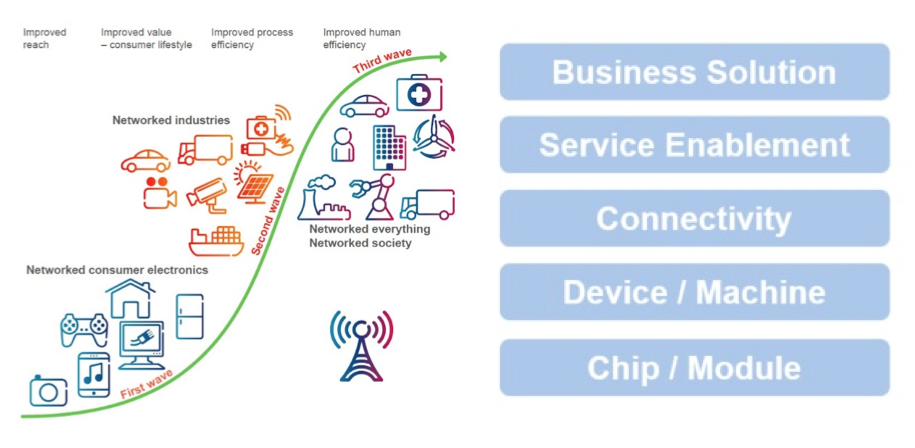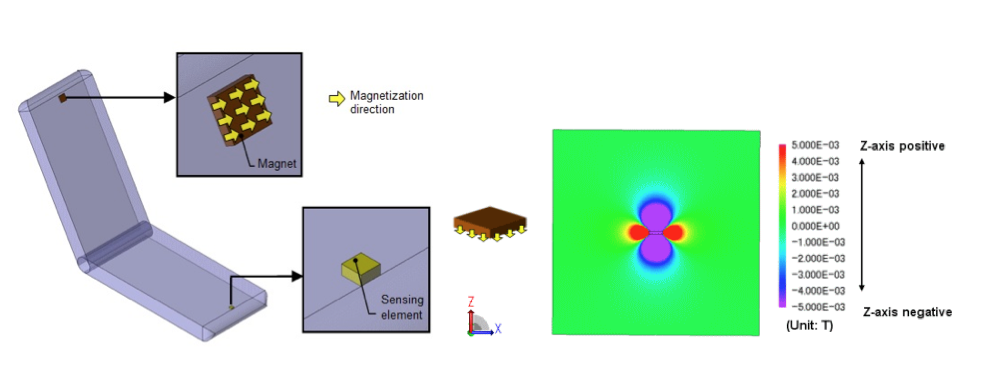Thought Leader Thursday: Internet of Things - Value and Waves
It seems like yesterday when in fact, it was more than 10 years ago when I was working on product development projects related to the first chips and devices based on ZigBee for home automation applications. At that time, ZigBee was known as a low-cost, low-power, and wireless sensors network technology for wireless control and monitoring applications. When working on those early projects for clients, the term “Internet of Things (IoT),” was not yet used.
The idea of IoT was developed in parallel, most likely started by Kevin Ashton in 1999 during a presentation at Procter & Gamble (P&G) where he linked the idea of Radio Frequency Identification (RFID) in P&G’s supply chain to the then-red-hot topic of Internet. Going back to ZigBee, its evolution has been significant and nowadays we have case studies like the Arial Hotel in Las Vegas. In the Arial Hotel, 4,300 guest rooms contain 70,000 ZigBee-enabled devices that seamlessly and wirelessly give guests full control of in-room systems like the temperature, door lock, curtains, and more. The ZigBee Alliance today is promoting Zigbee as a global wireless standard foundation for the IoT.
IoT concept has evolved over the years and refers to a network of uniquely identifiable objects or “things” with embedded electronics, software, sensors, and connectivity to enable objects to exchange data. These connections can be Machine-to-Machine (M2M) or Device-to-Person or vice versa. With this framework, IoT can be seen as an umbrella covering many technologies (wireless and wired) with billions of connected devices which are related to a broad set of applications and services. Some of these applications use the word “smart,” like Smart Cities, Smart Agriculture, or Smart Meeting, and due to the potential huge amount of generated valuable data, IoT is also related to Big Data.
The 3 Waves and IoT Value
An interesting press release from Gartner says that 4.9 billion connected “things” will be in use this year whereas in 2020, this figure will grow to 25 billion. Also, it states that consumer applications will drive the number of connected things, while enterprise will account for most of the revenue. From an industry perspective, manufacturing, utilities, and transportation are the top three verticals using IoT this year.
Let’s talk now about waves! Take a look at the “IoT Waves” predicted by Ericsson a while ago where 3 waves are predicted for the development of connected devices. The first wave is Networked Consumer Electronics, the second one is Networked Industries, and the third one is Networked Society/Everything which is where we start talking about the “Internet of Everything”.
Then what about IoT business value? I have seen some companies using IoT in their marketing campaigns to gain traction since IoT has become a powerful buzzword. On the other hand, I have seen other companies with a specific strategy to use IoT as a new revenue stream. What is clear is that IoT is a broad and fragmented market. If someone wants to develop or assess the value of an IoT product or solution, it is necessary to look at how such product is adding value and fitting into the IoT value chain. From the chip and module elements to the business solutions, vendors positioned on the upper part of the chain are offering solutions for vertical markets.

The 3 Waves of connected device development predicted by Ericsson (left) and IoT Value Chain (right).
Electromagnetic Waves and Communications on IoT
What about the electromagnetic (EM) waves and fields carrying IoT data? While IoT does not assume one specific communication technology, wireless communication technologies are playing a major role. Small, cost-effective, and low-powered sensors or devices are bringing IoT to the smallest objects installed in any kind of environment. Such wireless devices can be battery-operated and include a wireless module and antenna to send the sensed data (e.g. temperature) to the network or Cloud. Engineers designing and developing IoT devices are using EM simulation tools like FEKO at the early stages of the design process to launch more innovative products while ensuring the specifications are met in terms of parameters, like radio coverage, battery life and Electromagnetic Compatibility (EMC).
EMC is related to the proper operation of a device when other electronic devices are present. In other words, the device should be immune to a certain level of external interferences without generating interferences that can disturb other devices and equipment. Another key aspect is to ensure that devices will work properly and communicate effectively in the real environment. There are a huge variety of environments, such as a wireless sensor on a fridge or a wearable device where one typically needs to simulate the device with an antenna, including a human body model to ensure that the device will communicate properly when mounted on the body. Another example is the communication with RFID-enabled items or “things” in a warehouse environment.

Simulated surface currents on Printed Circuit Board (PCB) with antenna for ZigBee used to analyze potential EMC issues (left) and simulated near field radiation of RFID antenna mounted on a forklift in a warehouse environment to analyze blind zones where communication issues may arise (right).
Electromechanical sensors are also an important part within IoT devices. EM simulation tools, like JMAG, are used for the design of electromechanical elements. For instance, with recent improvements in the functionality of electric devices and home appliances, magnetic sensors are used for contactless sensing. One example is a sensor to check whether a door is open or closed. Such sensors use a magnet and a sensing element. When the magnet is close to the sensing element, the sensed field changes significantly and the variation is used to decide and control the door opening and closing.

Magnetic sensor with magnet and sensing element (left) and simulated magnetic flux density of magnet (right).
Up until now, we have been talking about EM simulation around the design and analysis of IoT devices alone or when installed on the real usage scenario. But there is much more. At a higher level of the IoT physical layer, engineers are interested in the performance at the system level. Here is where tools like VisSim/Comm are adding value to the IoT chain since they allow quick modeling and simulating of the end-to-end IoT communication systems as well as estimating their performance under a variety of channel conditions. This leads to reduced hardware prototyping, decreased design cycle time, and overall better system designs. One example is the simulation of a US 915 MHz band ZigBee communication link where one can simulate the Bit Error Rate (BER), a key parameter that is used in assessing systems that transmit digital data from one location to another. BER is used to quantify a channel carrying data by counting the rate of errors in a data string.
 Diagram for the simulation of a US 915 MHz band ZigBee communication link. By repeating the simulation at different signal to noise levels, the diagram produces a BER curve for the link.
Diagram for the simulation of a US 915 MHz band ZigBee communication link. By repeating the simulation at different signal to noise levels, the diagram produces a BER curve for the link.In Summary
I see IoT as a fragmented market that has been, and will continue, to grow and evolve. It is an umbrella for many wireless technologies, covering a broad set of applications as well as a solution targeted to specific vertical markets. IoT is not new for Altair. More customers are developing innovative IoT products using our leading electromagnetic simulation tools and system level modeling solutions, like FEKO and VisSim, for communications systems. More “things” will certainly be connected in the future as we continue to move forward with technology. IoT is a gateway to understand how we can communicate with technology and how technology can provide us with more in depth information about everything.




